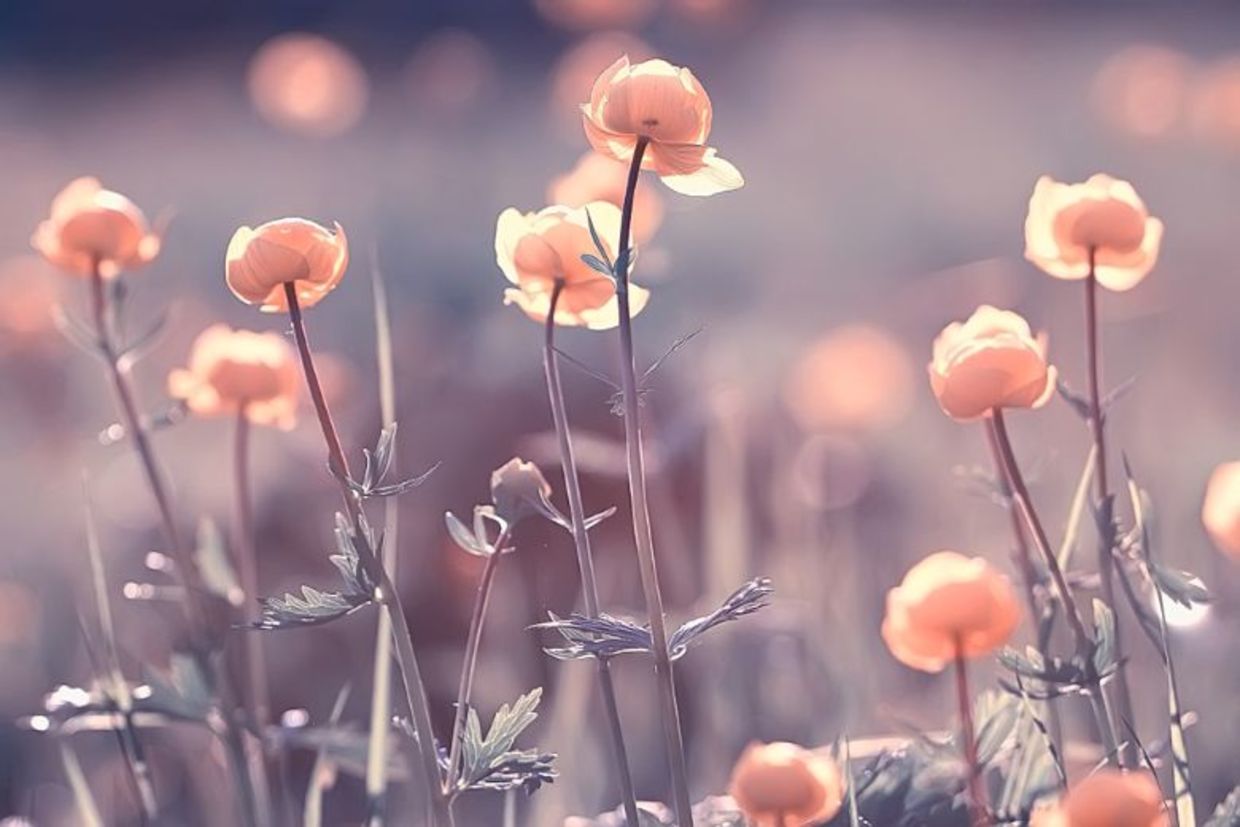
(Kichigin / Shutterstock.com)
More gardeners are waving goodbye to English-style manicured lawns and welcoming pastoral mini-meadows in their yards instead. As Realtor details, the longing to create a Little House on the Prairie meadow, or a garden like those in Claude Monet paintings, is a dream that more people are realizing.
Today, more gardeners are ditching their water-guzzling lawns for a more eco-friendly, less labor-intensive meadow-style yard with a beautiful natural aesthetic. These are showcased by landscape designers, helping popularize the trend even more.
Meadowscaping Defined
So what is meadowscaping exactly? As co-owner of CTX Land Clearing and Forestry Mulching, Brooks Turner explains to Realtor, unlike conventional gardening, with its neat rows and trimmed hedges, meadowscaping is after a more natural approach: “Meadowscaping involves planting native grasses and wildflowers in large swathes that mimic the look of natural prairies or meadows.”
Woman&Home calls it a charming, low-effort, low-cost, and low-maintenance garden trend that attracts wildlife in abundance. Gardening expert, Fiona Jenkins, tells the magazine that meadowscaping is all about letting things grow a bit wild and free.
Cacti Landscapes, meanwhile, details how meadowscapers use native plants and wildflowers to create a lush and sustainable backyard that promotes soil improvement and local wildlife.
Rewilding the Garden!
Those new to meadowscaping are advised to conduct research before they interpret the trend in their own yards. Turner suggest people work on understanding the native plants local to them, using above 70 percent is often cited, as the goal isn’t just adding visual interest to their yards, but creating an ecosystem that supports local wildlife.
Homeowners need to check that their community permits these types of wild gardens , especially if they are in the front yard and visible from the street.
It is also important to pick a spot benefitting from a minimum of six hours of daily sunshine, good drainage, where they can keep foot traffic to a minimum, and with a soil type that suits the intended plants.
Soil needs to be prepped, with turf grass removed, weeds cleared, the soil tilled, and a small amount of compost added. The US National Garden Bureau advises people considering meadowscaping to take a soil sample to their local university extension agent to understand its pH, composition and any missing micronutrients to ensure the health of their new meadow.
They should also pick seeds and plants to match their goals. If they want to attract pollinators, for instance, they should choose flowers beloved by bees and butterflies. Hummingbirds are drawn to tubular flowers with a high nectar content, while birders should plant grasses that birds adore, leaving the seedheads on flowers to feed them.
A Blooming Market
Several companies have sprung up to help people transform their gardens into mini meadows, capitalizing on the public interest in meadowscaping.
These brands offer various seed blends that can help nature lovers sow the kind of meadow they hope to cultivate in just a few easy steps.
And while meadowscapes need less maintenance than traditional gardens, they still need nurturing while becoming established. For instance, a newly-planted meadow garden needs regular water until plants develop a flourishing root system. Gardeners also need to resist the temptation to clear away decaying plants until the springtime, as these provide food and shelter for birds and insects over the winter, and help enrich soil and protect emerging seedlings in the spring.
Importantly, there is no need to completely transform gardens into meadows. Some gardeners prefer to cultivate wildflower patches in places like backyard seating areas with enviornmentally-beneficial native plants. Others favor wildflower borders and pathways.
Those new to meadowscaping should anticipate feedback from neighbours especially while the meadow is starting out! Some experts suggest progress update signs, indicating that pollinator and bird habitat-friendly native meadows are coming soon.
A Long List of Sustainable Benefits
Beyond their lush, natural beauty, small meadows offer numerous environmental pluses.
Meadowscapes promote biodiversity and create a habitat for pollinators, birds, and other wildlife,” Aaditya Bhatta, editor and founder of Plants Craze tells Realtor.
Country Living points out that longer plants and grasses can reduce soil temperatures, allowing insects to thrive, and attracting birds and other prey, while providing ecological diversity.
According to the BBC, meadowscaping is especially popular among younger generations who tend to be more climate-aware. Next-gen gardeners also like that compared to lawns, meadows, open landscapes filled with an array of non-woody plants like tall grasses, flowers and herbs, are more affordable to maintain, need less water and energy, and help cut more CO2.
Lawns cover about 23 percent of US urban land areas, and 70 to 75 percent of open green spaces in cities around the globe, the BBC reports. The more people who rewild their lawns, however, the more significant the environmental impacts from reduced pollution and stormwater runoff to a cut in soil erosion and urban heat island effects. This activity also boosts soil and groundwater quality.
Marc Johnson, a biology professor at the University of Toronto who has researched how urban landscapes impact plant-pollinator interactions, recommends that meadowscaping newbies start small. “Even creating a diverse little garden on an apartment balcony can have an impact,” he says. His own front lawn meadow is broken down into smaller specific pollinator gardens, including a waystation for monarch butterflies.
For urban areas, Yardzen suggests “pocket pollinator” gardens for rooftop gardens, or ornamental grasses in containers to create a soft, natural look. Visit the National Wildlife Federation’s Native Plant Finder tool to choose plants with the highest environmental value for your limited space. There’s also a sidewalk meadowscaping trend, as American Meadows details.







